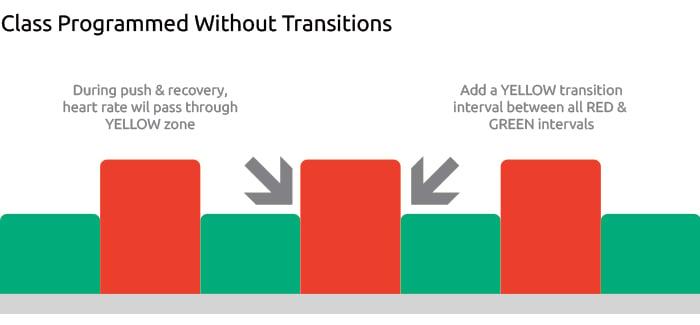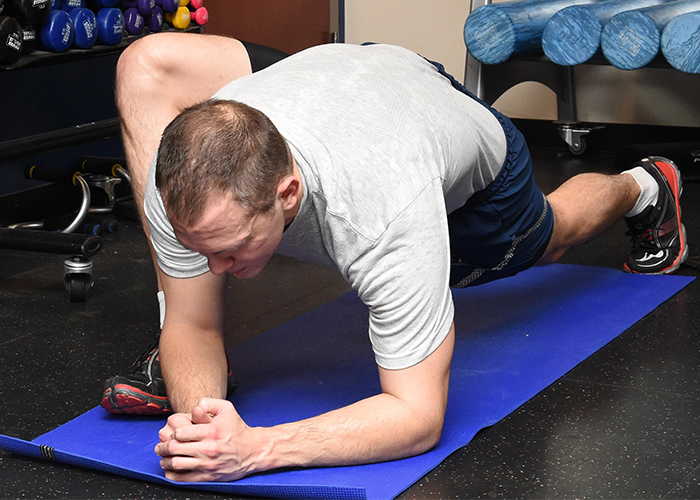Selling Exercise so Clients Want to Buy It: Part II
In Part I of this two-part blog post, we shared current research from affective and behavioral science suggesting that some of the traditional methods of selling exercise (i.e. promoting health benefits and weight loss) might not be the most affective in promoting adherence.
In an article titled, From a Vital Sign to Vitality: Selling Exercise So Patients Want to Buy It (published in the Translational Journal of the American College of Sports Medicine; ACSM), Michelle Segar, Eva Guérin, Edward Phillips, and Michelle Fortier provide evidence for some alternative methods of selling exercise so that patients want to buy it (in our case as fitness professionals, we are selling exercise to our clients rather than to patients).
The authors provide six evidence-based suggestions for clinicians to use in selling exercise to their clients to promote a sustained exercise routine. In Part II of this blog post, we will share the second, third, and fourth strategy we have distilled from those six suggestions to “sell” exercise to clients in a way that will make them repeat customers. Further, we will outline how you can integrate MYZONE® into your sales strategy to enhance client motivation and adherence.
As a refresher, the first key takeaway was: Brand or market exercise to help clients achieve their desired experiences and aspirations. We should first take time to understand our clients true desired experiences and outcomes before we outline an exercise program for them.
Here are the remaining three key takeaways for fitness professionals:

2. Frame the way you speak about exercise and the way you design your client’s program to promote autonomy and intrinsic motivation.
The authors of the article explain that framing is the social construction of a phenomenon (such as work, exercise, or relationships) by influential sources like leaders, clinicians, and the mass media. Framing of behavior influences how people see and experience that behavior.
As fitness professionals, we have the opportunity to frame the behavior of exercise for our clients; therefore, how we talk about and promote exercise is very important. Several research studies have demonstrated that participants had a more enjoyable exercise experience when their workout was framed as “for fun” rather than as “exercise”.
Self-Determination Theory (SDT) helps explain how we frame exercise is essential in promoting sustainability. SDT posits that there is a difference between low-quality external motivation (i.e. to lose weight) and high-quality intrinsic or internal motivation (i.e. for vitality and energy). High quality motivation promotes autonomy (feeling ownership) of the exercise behavior and makes clients more likely to persist over time. Interestingly, autonomous motivation for exercise has been shown to influence health-related outcomes like sustained weight loss.
You can promote client autonomy by providing your client ownership of their exercise program. Ask them to determine with you the exercises they perform and the intensity at which they perform them. And, when your client is not working out with you, ask them to exercise on their own and provide flexible guidelines. When you and your client meet next, the two of you can review their MYZONE Activity Calendar together and you can ask them to share what they did and how they enjoyed it.

3. Promote exercise for vitality and energy (rather than just weight or health benefits) and program for pleasure, meaning, well-being, and vitality.
When you take time to talk to your client about their goals, so often, the bottom line is that they are looking for more energy and higher quality of life. They may initially express these as weight loss or health-related goals, and whereas those important, it really boils down to living better and happier. So, rather than focus on the weight-loss or health-related goals, why not focus on promoting vitality and energy and framing exercise in that way?
Segar and colleagues describe that research on how people manage behavior suggests that folks will only continue to strive toward goals if they get feedback that they are moving toward them, and that people are more motivated by immediate rewards rather than delayed outcomes.
Because we know that health and fitness improvements take weeks and months of hard work to achieve, why not focus on your client’s immediate experience of “feeling good” or “feeling more energized” to help them feel successful at every session?! You can also track the more objective health and fitness outcomes over time, but you are offering them immediate rewards (and more motivation) by helping them frame their workout as enhancing their well-being. Segar and colleagues write, “neuroscience suggests that learning a positive association between a specific behavior (e.g. walking) and a reward such as pleasure or vitality (i.e. “liking”) triggers a “wanting” to walk…and consistently motivates walking behavior. Perhaps one of the best ways to motivate your clients toward their longer-term outcome goals is by helping them focus on shorter-term enjoyment goals (pleasure, meaning, well-being, and vitality).
MYZONE also offers other features that help provide immediate feedback and rewards, like the MYZONE Effort Points (MEPs) system, calories burned, effort graph, and average intensity. You can determine with your clients a certain number of MEPs they would like to accumulate per workout or a target average intensity and help them feel accomplished. Combine the “feel good” aspects of the workout with the objective feedback to set your clients up to come back for more, and more, and more, and more.

4. Promote positive affect because affect drives decision-making.
Our feelings and emotions, also known as affect, drive our daily decisions. Further, anticipated affect (how we think we might feel) is a strong motivator and influences behavioral choices. Research suggests that we can influence our clients’ post exercise affect and motivation to exercise again by simply telling them that they can expect to experience positive feelings and emotions as a result of being physically active.
Try that out. Share with your client that they can expect to feel good following their exercise sessions, and then ask them to write down how they actually feel after their sessions and what their motivation is around exercising again. You can have them record this in their MYZONE App as a comment on their move, or you can have them use the “Rate How You Feel” feature.
We hope you and your clients find all four strategies helpful (see Part I for the first strategy)! And, we want to know how these strategies are working for you and your clients. Post to Facebook, Instagram, and Twitter and use the hashtags: #effortrewarded #myzonemoves.
For more tips on how to use the MYZONE heart rate monitor, follow us during Fitness Fridays on Facebook Live (subscribe on MYZONE’s Facebook Page) – 8 am PT, 11 am ET.
Keep moving forward!
Share this
You May Also Like
These Related Stories

How to Use the Myzone System to Track Progress

Summer Sizzler Core Training Workout



